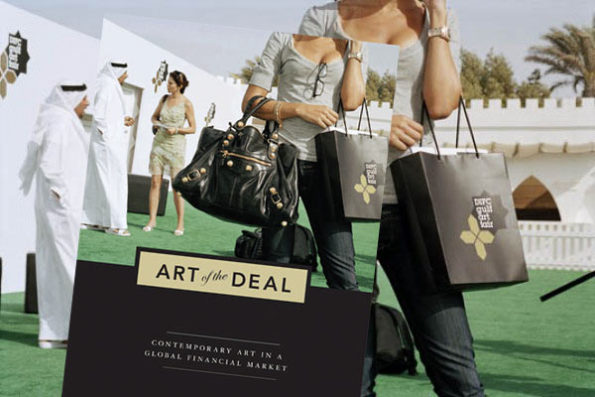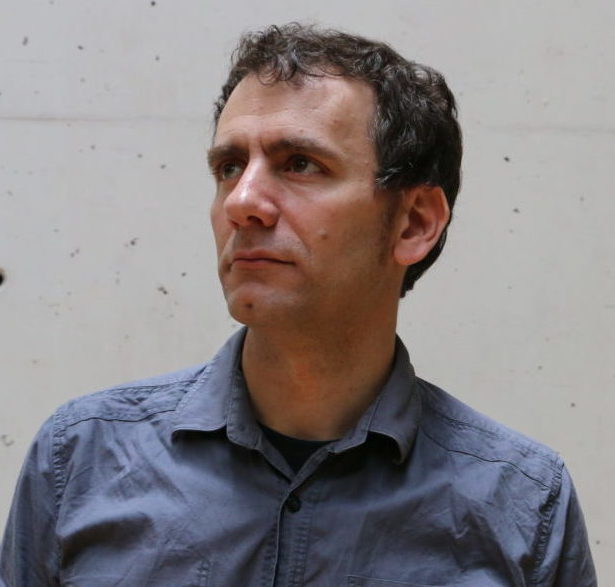Search
To search for an exact match, type the word or phrase you want in quotation marks.
A*DESK has been offering since 2002 contents about criticism and contemporary art. A*DESK has become consolidated thanks to all those who have believed in the project, all those who have followed us, debating, participating and collaborating. Many people have collaborated with A*DESK, and continue to do so. Their efforts, knowledge and belief in the project are what make it grow internationally. At A*DESK we have also generated work for over one hundred professionals in culture, from small collaborations with reviews and classes, to more prolonged and intense collaborations.
At A*DESK we believe in the need for free and universal access to culture and knowledge. We want to carry on being independent, remaining open to more ideas and opinions. If you believe in A*DESK, we need your backing to be able to continue. You can now participate in the project by supporting it. You can choose how much you want to contribute to the project.
You can decide how much you want to bring to the project.

The market is booming. A strange boom that it is hard to know whether it was expected by the structure of the market itself but which directly affects the activities of the institutions. The market, institutions, politics and the cultural context find themselves in a situation where it is necessary to think about where we are heading.
In the context of a global economic crisis the upper end of the art market is euphoric. Noah Horowitz, author of “Art of the deal”, simplifies it in a graphic manner: the 1% who are winning even greater sums during the crisis, increase their purchasing power at the same rate as the art market sells. If they win, they buy. Horowitz’s reading doesn’t seem at all critical, using the figures and graphs to talk with a supposedly cool objectivity, that conceals a perfectly assumed servility. We belong to them, for them, so we should just be content with the wealth of the 1%.
However, the panorama is changing, and a great deal. The market is already not what it was. Galleries tremble in the face of the auction houses, which have become the places for the big deals and record figures. Large galleries can keep up and be present at the important international fairs, to which one undoubtedly has to add Hong Kong, it’s not for nothing that it has been bought by the same company that directs Art Basel and Art Basel Miami Beach. Everything indicates that the local market will need redefining in the face of in increasingly difficult and expensive “Champions League”. The local market suffers, the gallery that investigates and supports artists from their youth, facilitating their growth, can’t work with the figures implied by global mobility, so the distance between the markets grows, the big stars are ever greater all stars and the rest will find it hard to enter the game.
In other words, the art market follows the same logic as the system: the big fish get bigger, the speed increases, the butchery is extreme and the proposals have to be imposing, regardless of the contents, including even the little dots of Damien Hirst. Damien Hirst for example, has gone from the medicine cabinets, quite frankly strong pieces, to become “simply” an excellent manager of his own business.
But the market is evidently not the only factor in this sphere. The institutional context functioned as a counterweight, as an integral member where legitimacy could appear, where its own rhythms could be established, rhythms that can be undoubtedly slower and more deliberate. The capacity for experimentation was also greater, given that there was no need to obtain any economic profit. The institutional context incorporated investigation into its procedures, and without denying its connection with the market, was capable of lancing proposals that a priori seemed to incorporate a certain impediment for the ways and forms of commerce.
On the one hand the market and on the other the institutions, and after that varying degrees of independence, different levels of professionalism and different roles with which to fabricate an interesting reticulum, structured and sufficiently complex, with an internal capacity to overcome any excessively marked dirigism. If the market evolves it seems that the institutional context is also obliged to do so, without really knowing why.
Europe was this place where what was public had educational, social, cultural and political connotations. The different national identities of modern Europe were defined and portrayed through literature and art. One day, the role played by artists in defining national identity in the 19th century, will need to be revisited. As well as the importance of the creation of art institutions as a system for explaining to the population that they were somebody, somebody important and that their being was also in creation.
The “pact” between the agents understood that the institutional context counterbalanced the market, that each defined one part of a totality and that the different contributions and approaches were favourable for the whole, in the understanding that the whole stands for the art world as well as for society. The function of the museum went beyond the present day to become archive and possible futures. The proto-art centre became this place where something was in the process of being defined. And politics promoted the existence of this infrastructure, with its own degree of independence, as it was dealing with factors that shaped society. And the market later came to generate a secondary circuit. The North American system has always been quite different, with MoMA being an example of this.
However the disarticulation of the idea of Europe or of whatever European country it might be, for the “good” of the economy leads to the non-existence of any time beyond the strident present, where numbers are the order of the day. Results have to be economic and the word “education” no longer serves as a form of defence. Institutions are obliged to enter into a process of commodification. Politicians celebrate that private finance gains adepts and presents as exemplary the large institutions that sell the most T-shirts and postcards, obtaining in the process a greater percentage of their own financing, as if public financing wasn’t really the “own” financing. Congratulations aren’t given for a critical programme that improves the day to day of the people or makes it possible for newspapers to talk about something interesting. Which is to say, that content is eliminated from the process of evaluation.
Faced with the pressure to achieve certain figures one can’t stop thinking about how NGOs have been obliged to work in a specific manner. The objectives of non-governmental organisations are not defined by themselves but by who grants the money. And it is not just that, whoever places the capital also clearly states how the work is to be carried out, what methods will be applied and what objectives have to be achieved. Objectives that imply, surprise surprise, the creation of new markets. The Logical Frame Approach (LFA) is the system of work and monitoring, that large donors oblige NGOs to follow. In this way, the market has managed to gain control of what were supposedly independent strategies for development in other places.
The problem is that public art institutions are directed, from political positions, to follow the forms of the market, and we are already seeing where the market is going. We are living the repetition of what happened in the market in the public sphere: only the big fish can win. Goodbye to medium or small sized projects. And just as with development, the path will be cleared for private capital to be defining. If you are private capital, you will want maximum profit from your investment and this is obtained by betting on the winning horse or inventing your own advertising platform. We’ve witnessed the birth of new private institutions that are nothing more than personal propaganda. We’ve seen the pressure placed on public institutions to obtain specific economic results. We have seen how this whole modus operandi affects the programming, the teams employed and the reception of the media.
The dismantling of states also has a huge impact on the structure of art and leads to a huge expenditure of energy merely to subsist. Institutions have to dedicate a large amount of their time looking for resources, placing them in a position of emergence and fragility that makes it impossible to think beyond “today”. Criticality is called into question, as first we have to ensure that the institution has not been dismantled. Something isn’t working. It was in the independent context -outside the institutional- where fragility existed, the institutional framework requires a certain amount of security to permit reflection and critical distance. Within the institutional framework there is a civil responsibility that could disappear, depending on the extent of the demands for a larger quota of privatisation.
We have therefore a system that is no longer compensated. The market is a larger market, but the institutional context is not an expanded institutional context. The careers of artists, curators, programmers or of whatever profile it may be seem to be faced with only one space for action, that has been earmarked in advance. And, as I said, it is not a market that generates a reticulum but a market where the auction houses are out for the lot. And amidst this diatribe, the bombshell: Tensta Konsthall, the art centre that Maria Lind has directed for a while now, has established a collaboration with Bukowskis, the most important auction house in Sweden. And the media have their story, as Bukowskis is the property of the family Lundin, people of petrol and more than dubious activities in Ethiopia. The art centre, that is in principle public, and by nature experimental, collaborating with the capitalist extreme. In this dislocated art context, with the galleries up in arms, artists don’t know where to place themselves. However, in the face of everything, a catchy phrase becomes law: “Money Rules”. A phrase that once accepted becomes the norm, it’s worth thinking about whether it comes imposed by the market or the politicians, by the structure of institutions itself or if it represents the end of a system.

Director of Index Foundation, Stockholm, exhibition curator and art critic. Yes, after Judith Butler it is possible to be several things at once. He thinks that questions are important and that, sometimes, to ask means to point out.
"A desk is a dangerous place from which to watch the world" (John Le Carré)